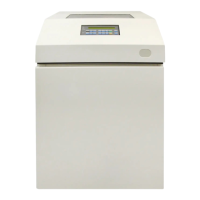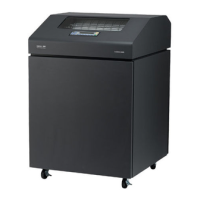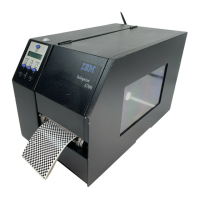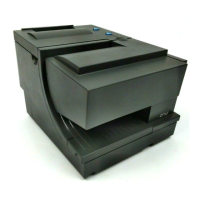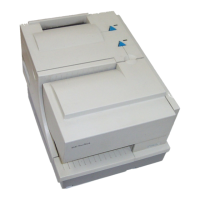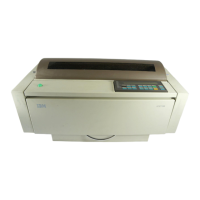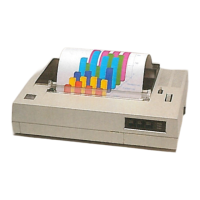Glossary
serif. A short line angling from or crossing the free
end of a stroke. Examples are horizontal lines at the
tops and bottoms of vertical strokes on capital letters,
for example, I and H, and the decorative strokes at
the ends of the horizontal members of a capital E.
Contrast with sans serif.
session. In the IPDS architecture, the period of time
during which a presentation services program has
sole control of a printer and has established two-way
communication with the printer.
shade. Variation of a color produced by mixing it
with black.
shear. The angle of slant of a character cell that is
not perpendicular to a baseline. Synonymous with
character shear.
sheet. A division of the physical medium; multiple
sheets can exist on a physical medium. For example,
a roll of paper might be divided by a printer into
rectangular pieces of paper, each representing a
sheet. Envelopes are an example of a physical
medium that comprises only one sheet. The IPDS
architecture defines four types of sheets: cut-sheets,
continuous forms, envelopes, and computer output on
microfilm. Each type of sheet has a top edge. A
sheet has two sides, a front side and a back side.
Synonymous with form.
side. A physical surface of a sheet. A sheet has a
front side and a back side. See also sheet.
simplex printing. A method used to print data on one
side of a sheet; the other side is left blank. Contrast
with duplex printing.
single-byte coded font. A coded font in which the
code points are one byte long.
slice. In FD:OCA, a subarray that consists of all
elements that have an identical position within any
given dimension of a regular n-dimensional array.
space. In bar codes, the lighter element of a printed
bar code symbol, usually formed by the background
between bars. See also element. Contrast with bar,
clear area, intercharacter gap, and quiet zone.
spanning . In the IPDS architecture, a method in
which one command is used to start a sequence of
constructs. Subsequent commands continue and
terminate that sequence. See also control sequence
chaining.
special data area (SDA). The data area in an IPDS
Acknowledge Reply that contains data requested by
the host or generated by a printer as a result of an
exception.
store mode. A mode in which segments are stored
for later execution. Contrast with immediate mode.
stroke. A straight or curved line used to create the
shape of a letter.
structured field. A self-identifying, variable-length,
bounded record, which can have a content portion
that provides control information, data, or both. See
also document element.
subset. Within the base-and-towers concept, a
portion of architecture represented by a particular
level in a tower or by a base. See also subsetting
tower.
subsetting towe r. Within the base-and-towers
concept, a tower representing an aspect of function
achieved by an architecture. A tower is independent
of any other towers. A tower can be subdivided into
subsets. A subset contains all the function of any
subsets below it in the tower. See also subset.
suppressio n. A method used to prevent presentation
of specified data. Examples of suppression are the
processing of text data without placing characters on
a physical medium and the electronic equivalent of
the “spot carbon,” that prevents selected data from
being presented on certain copies of a presentation
space or a physical medium.
symbo l. (1) A visual representation of something by
reason of relationship, association, or convention.
(2) In GOCA, the subpicture referenced as a
character definition within a font character set and
used as a character, marker, or fill pattern. A bitmap
can also be referenced as a symbol for use as a fill
pattern. See also bar code symbol.
symbo l set
. A coded font that is usually simpler in
structure than a fully described font. Symbol sets are
used where typographic quality is not required.
Examples of devices that might not provide
typographic quality are dot-matrix printers and
displays. See also character set, marker set, and
pattern set.
synchron ous exception. In the IPDS architecture, a
data-stream or resource-storage exception that must
be reported to the host before a printer can return a
Positive Acknowledge Reply or can increment the
received-page counter for a page containing the
exception. Synchronous exceptions are those with
action code X
'01',X'0C',orX'1F'. See also
data-stream exception. Contrast with asynchronous
exception.
syntax. The rules governing the structure of a
construct. See also pragmatics and semantics.
Systems Application Architecture (SAA). A set of
IBM software interfaces, conventions, and protocols
that provide a framework for designing and
developing applications that are consistent across
systems.
214 6400 IPDS
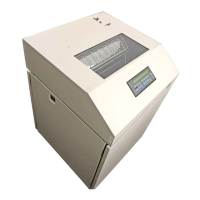
